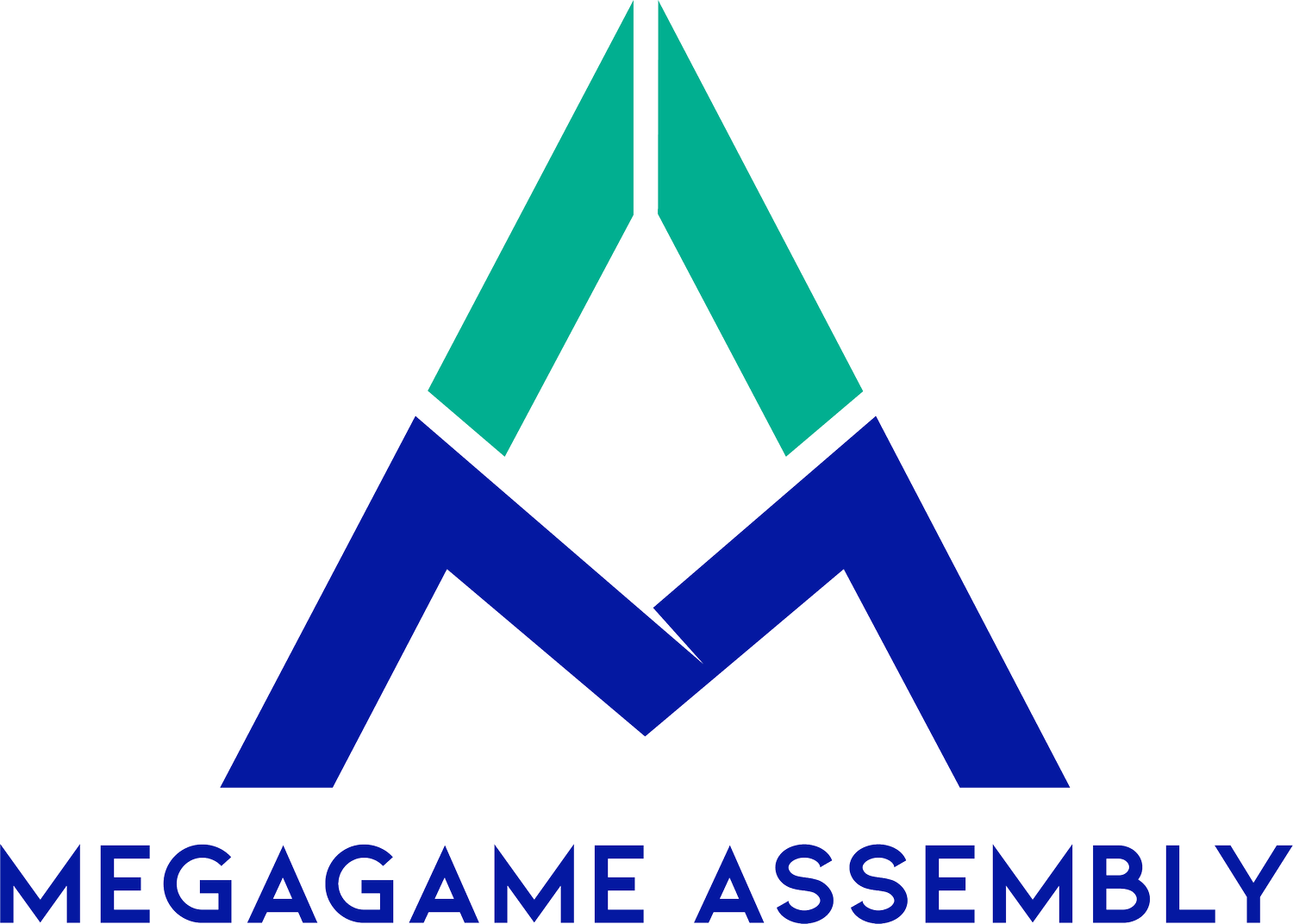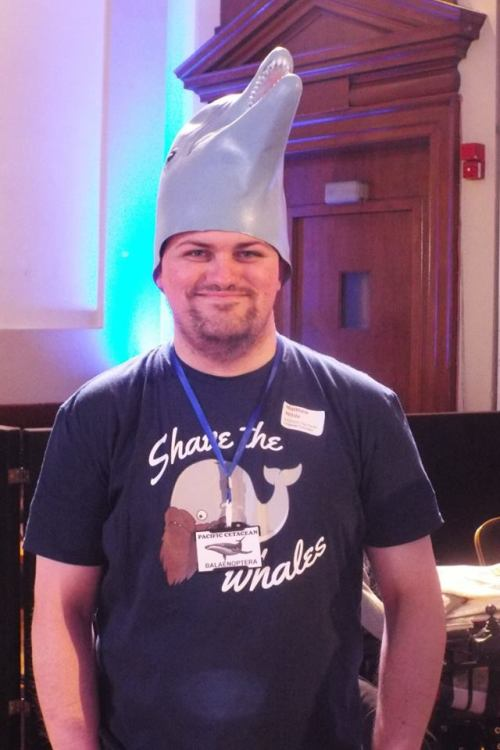Megagame Designer Thoughts: To Rail Is Worth Ambition
In these articles Rob Grayston has a chat with designers after their games have run, to talk a bit about their experiences, thoughts, and any general pearls of wisdom they may wish to impart. Here we have Matthew Wilde to tell us about a railway infrastructure game...set in Hell!
Tell us a bit about yourself – how did you get into megagames?
Well, it all started when I watched The Video. As a combination nerd and theatre kid, I immediately said that’s looks cool, and signed up for the first megagame I could attend, “Of Gods and Men” in Leeds back in 2014. I had such a great time that I think I went to pretty much every megagame I could for the next few years, getting to play “The Dolphin” in the big runs of Watch the Skies, and “The guy who trapped Chris Brown in Africa all day” in Watch the Skies 4.
I enjoy playing nonsense and villain roles, and strongly believe losing is fun when it contributes to a better story overall, whether that’s playing a Space Emir turning crisis into a system-spanning royal wedding, being cast as famed hater of kings, Oliver Cromwell, or a completely honest commander everyone was sure was a Wolf going down with the fleet in Den of Wolves. Also, it’s strange, but I've been cast as a duplicitous eunuch twice.
Throughout all this I helped run a few megagames in Preston and started being an aggressively mercenary facilitator for any group who asked. Chris eventually got his revenge by making me Africa Plot Facilitator For Life in First Contact.
Matthew as a cetacean in Watch The Skies 3. Photo by: Matthew Wilde
How do you think your recent run of To Rail Is Worth Ambition went?
Having been a facilitator many times before, the step up to lead facilitator for the first time on the day was notable. Many more plates to keep spinning, and things to keep in mind. Honestly the day is still mostly a complete whirlwind and blur for me.
However, everyone looked to be having a good time post-game, sharing tales of their adventures in Hell so I think it did go quite well. A few minor adjustments were made to course correct at lunch, but overall the game survived first contact with the players without breaking completely, and most of the core design worked as intended.
Players have a habit of doing unexpected things – from the recent run of the game, did anyone do something you hadn’t considered, and how did that go?
The day started excellently when my friend who was set to reprise the role of Gluttony wasn’t able to attend due to food poisoning, after potentially taking the costume too far. Wrath meanwhile was surprisingly diplomatic and friendly to everyone, so everyone ended up being okay when they decided to invade Heaven as the game ended.
An inverse example of this on the day was that several players commented that the engineers had gone mad and were laying baffling circuitous routes everywhere. But this was actually an intended bit of design aimed to mimic the transcontinental railroad in the US, where companies were paid based on distance of track laid, not practicality, so in some cases companies would have winding tracks going nowhere avoiding connecting up with the rest of the network so they could keep on building and getting paid – the straight lines of the first few turns quickly descended into chaos spaghetti as intended.
Sensible track placement. Photo by: Matthew Wilde
Megagames need drive and enthusiasm from a designer – what excited you about creating a game that is about the railway infrastructure of Hell?
I’m not saying the Venn diagram for the intersection of megagamers and train enthusiasts is a single circle, but as a community we on average sure do love trains, myself very much included. Having attended far too many megagames, and enjoyed the post-game discussions, some topics came up quite regularly – including how would you do a train or time-travel megagame. I was regularly told such ventures were madness, and had too many pitfalls. Therefore, I dreamed the impossible dream because I was told it was a fool's errand!
The Hell element, meanwhile, sprung from not wishing to do a strictly historical game, which would just be drawing a line across the continental United States, everyone shaking hands and calling it a day. I wanted politics, betrayal, humor, and a reason for fabulous costumes. Putting it in space is the classic solution, but space trains make no sense, as where do you even build the track?
Hell proved the perfect location for the excesses of capitalism following the Gilded Age to play out, leading into the political and economic upheaval caused by WW1, the rise of Communism, & the Great Depression; additionally the setting Flanderised the evil and excess into something more fun.
It ended up being the perfect setting for extremely greedy industrialists to literally sell their souls to the Devil, just for the chance to make an extra buck to fuel their unending ambitions.
Players laying hellish tracks. Photo by: Matthew Wilde
Related to the above, what was influential in designing To Rail Is Worth Ambition?
Countless other megagames, both in their own design and rules, and the inevitable post-game discussions on how a train megagame might work. Board games (Ticket to Ride is certainly in there somewhere) & Computer games both helped – notably the original release of Solium Infernum (2009). Any TV or film you can think of that has interesting characterisation of the Devil (far too many to count), and literature like Dante’s Inferno and Paradise Lost.
The title of the game is a slightly altered quote from Paradise Lost - “To reign is worth ambition though in Hell. Better to reign in Hell, then serve in Heaven.” (normally shortened to the final sentence) - Which became “To Rail is Worth Ambition though in Hell: Better to Rail in Hell than take a Rail Replacement Bus Service in Heaven.”
This was shortened to “To Rail is Worth Ambition” for everyone's sanity.
Roughly how long would you say it took to create your megagame, and what was the biggest challenge in making it come to life?
Saying I want to make a megagame? 2014. Actually putting serious thought into it - 2018 (Which lead to several other sensible ideas, like a megagame about mining cheese on the moon or Spanish Conquistadors arriving in Mexico to discover the Aztec Gods are real). Narrowing it down to Hell trains, 2020, actually having the confidence to present it to a group, 2022.
I think the biggest challenge along the way was finding a core mechanic that exuded...trains. That final piece in the puzzle ended up being Dominoes.
Seven Deadly Sins manifest. Photo by: Matthew Wilde
Once I had Hell Dominoes as a core resource in the game all the design of the sub games flowed naturally from it, ranging from constructing train dominoes to lay track.
Seven Deadly Dominoes. Photo by: Matthew Wilde
Set collecting to trade cargo, or giving certain faces increased value in different parts of the game, made people trade for the ones they wanted or needed most. This also naturally led to what a card with no faces represented (the double blank face). Was it completely useless? To most players, yes. However, a card without sin was the natural objective for the pesky angels to collect!
What do you think might help new designers getting games run?
Knowing they can get help and feeling welcome to ask for it. I think pretty much every major delay or issue with the game can be attributed to, in some part, me trying to do everything myself like an idiot. Almost all these issues were solved when I let other people in and allowed them to help me.
Everyone involved in the process from other megagames I discussed ideas with or sent me train and hell puns, The True North team, friends I playtested with, facilitators on the day, or my family being sent to cut 700 individual cards in the arts and crafts mine, all helped so, so much and the game would never have run without everyone who helped along the way.
We all have lists of games we’d like to make, and some of these end up actually bearing sweet megagame-flavoured fruit – what are you working on for your next game design?
At this point in time the design itch has been scratched, at least for the next year or two, and it would be nice to play some games for a while. But I suppose after being told a train megagame was folly, I’ll have to take a look at time-travel next.
The final rail network in all its Hellish glory. Photo by: Matthew Wilde
If resources and time were no object, what would be your dream megagame to design?
If we’re not limited by resources or time, I suppose an ongoing megagame actively occurring in your dreams, which you can play each night while you sleep, would be the dream megagame.
For anyone looking at designing a megagame, what is your one top tip for them?
Find a way to prototype your game. I was able to prototype all the components for my game into Tabletop Simulator, which allowed me to run regular tests with friends (despite distance) and iterate on the design. Also, when it came time to prepare for the final run, having a digital model of the game I could show the facilitator team while explaining the rules made it easier for everyone.
Thank you to both Matthew and Rob for coming together to be interviewed for and write this post! If you’ve designed a megagame and would like Rob to interview you, let us know!







